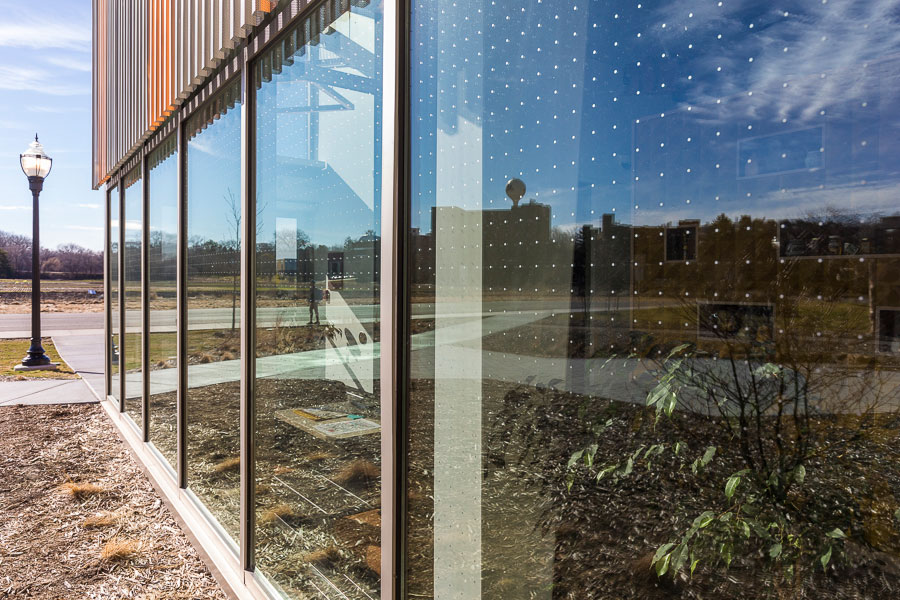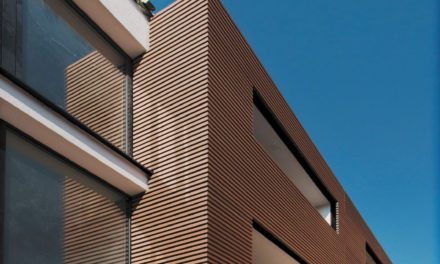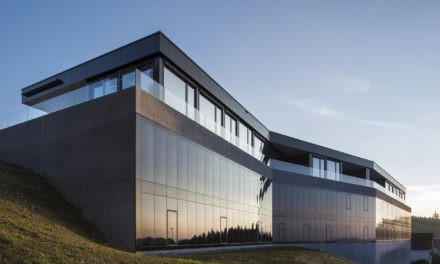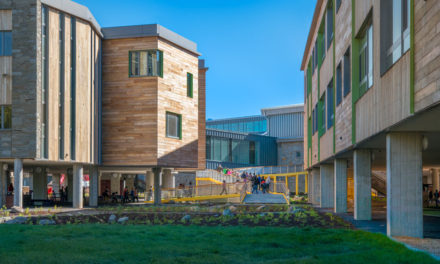Owner: University of Minnesota
Architect/Designers: Alliiance; Minneapolis, Minnesota
Vitro Glass Products: Solarban® 70XL Glass
Walker Glass Products: AviProtek® E bird-friendly, low-e coated, acid-etched glass
Glass Fabricator: Oldcastle BuildingEnvelope; Wausau, Wisconsin
Glazing Contractor: Empirehouse; Mounds View, Minnesota
It’s the best of both worlds at the state-of-the-art Bee and Pollinator Research Lab at the University of Minnesota. Inside, scientists are studying how to reverse the decline in wild pollinators and honeybees, while outside, robins and cardinals stand a significantly better chance of avoiding potentially deadly collisions with the building’s windows, thanks to energy-efficient, bird-safe glass combining technologies from Vitro Glass and Walker Textures®.
The catalyst for the facility was twofold—space (a 900-square-foot area in a hall on campus and various other buildings served as the previous research “lab”) and food (collapsing native and honeybee colonies were threatening pollination, which, in turn, was adversely affecting the natural food supply).
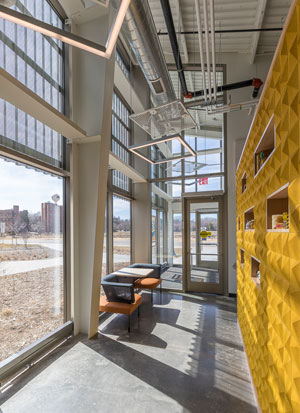
Perforated metal panels in front of the glass in the research lab’s lobby provide sunshade, but also allow light to penetrate while simultaneously managing heat gain and glare from direct sunlight. Photo credit: David J. Turner Photography
When designing the building, Minneapolis-based architecture firm Alliiance had two main drivers. The new facility needed to be centralized and large enough to accommodate all the equipment and offices from the existing lab buildings. It also had to comply with state-mandated B3 (Buildings, Benchmarks & Beyond) sustainable building and design guidelines, established by the Minnesota Legislature in 2001 to achieve 30 percent energy savings in state-owned buildings.
“We needed to find the right balance between daylighting and energy (heat gain), especially from the vast glass wall that we spec’d for the southwest corner,” said Anna Pravinata, principal at Alliiance. To satisfy B3 guidelines, bird-safe glass also was required for large glass areas, so Alliiance turned to Walker Textures® AviProtek® E bird-friendly, low-e coated, acid-etched pattern on Solarban® 70XL solar control low-e glass by Vitro Architectural Glass.
In addition, Alliiance recognized the importance of being able to view the adjacent fields, providing sufficient daylighting for dark hallways and making the lobby transparent and inviting. Pairing Solarban® 70XL glass with the etch design of AviProtek® E maximized the amount of natural light entering the building, thereby achieving Pravinata’s vision of using a lot of glass while staying within budget.
The clerestory windows on the building’s south face allow significant amounts of daylight, reducing the electrical lighting needed inside. Perforated metal panels in front of the glass in the building’s lobby provide sunshade, but also allow light to penetrate while simultaneously managing heat gain and glare from direct sunlight.
Combining energy efficiency and bird protection presented no challenges, said Pravinata. “The glass in the lab was probably the simplest I have ever worked on. Each portion of the glass make-up (low-e and etching) was targeted to solve a specific issue,” she explained. “We wanted to be very cost-effective in our glass design and use an off-the-shelf system in lieu of custom.”
Also helping to control expenses were the use of a pre-engineered steel frame, which reduced labor costs and enabled the incorporation of higher-quality custom shapes in larger sections of the building to be put up more quickly, and the installation of sealed concrete floors instead of elaborate coverings.
When it opened in October 2016, the lab became the first research center in the region to combine native bee and honeybee research. It includes a practical lab to support field research and a technical lab to advance the state of the biological science on bees; offices for primary investigators, associate researchers and support staff; and a commercial-grade honey-extraction operation. Outdoor features include beekeeping apiaries, demonstration pollinator gardens and a 740-square-foot cold storage building.
The 10,500-square-foot lab met all expectations and achieved Alliiance’s primary objectives: Researchers and students have a large, centralized multifunctional building in which to conduct advanced research activities, the facility complies with the state’s B3 guidelines, and birds are safer because of the AviProtek® E/Solarban® 70XL glass.
As one of the cornerstones for groundbreaking studies, the Bee and Pollinator Research Lab doesn’t just pass the eye test, it passes the bee (and bird) test, too.
Formulated with the industry’s most advanced triple-silver coating, Solarban® 70XL glass has a center-of-glass solar heat gain coefficient (SHGC) of 0.27 and visible light transmittance (VLT) of 64 percent in a standard 1-inch IGU with clear glass.
To learn more about Solarban® 70XL glass by Vitro Architectural Glass or AviProtek® E acid-etched glass by Walker Textures, visit vitroglazings.com or walkerglass.com.

